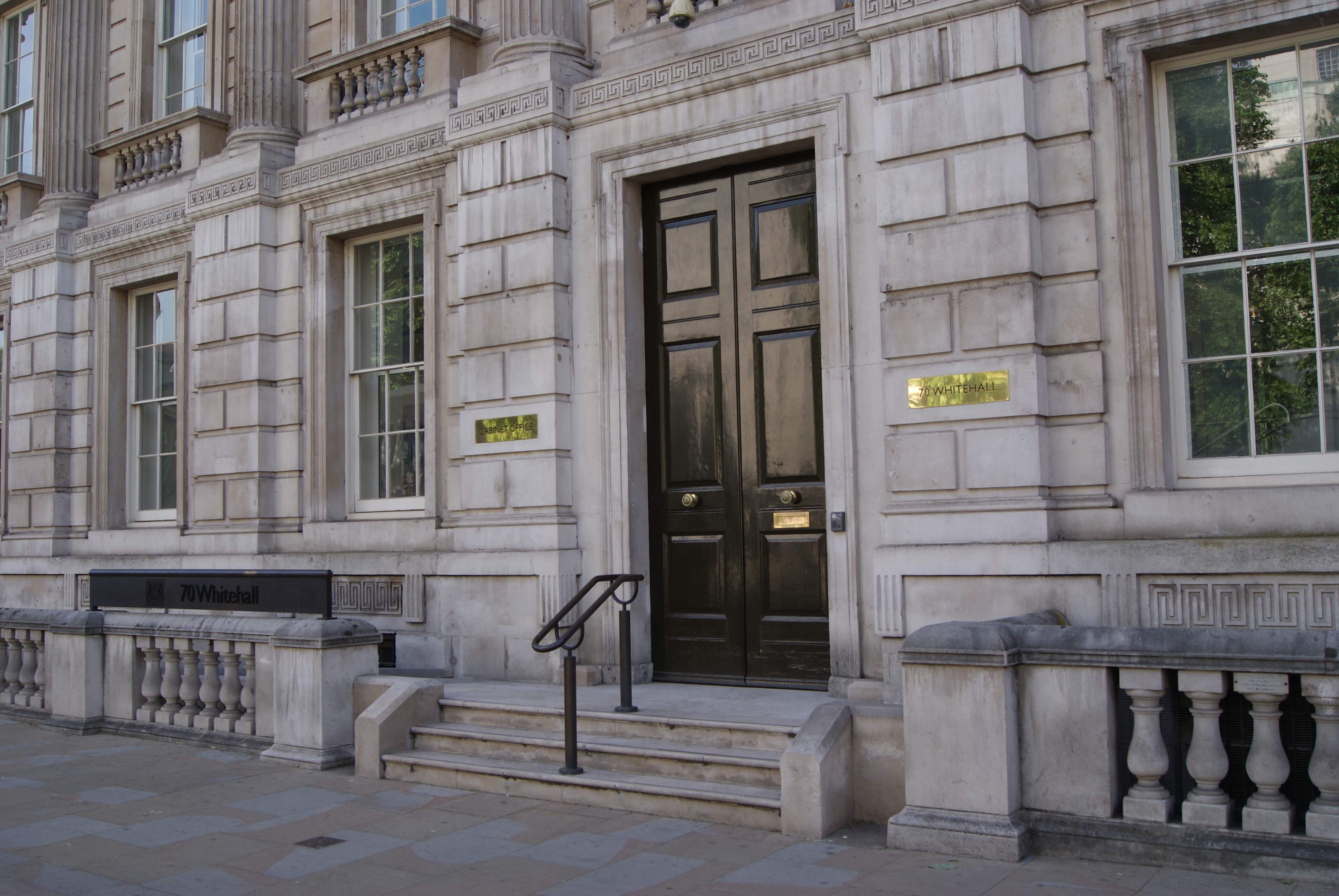|
EU Energy Efficiency Directive 2012
The Energy Efficiency Directive 2012/27/EU (abbreviated EED) is a European Union directive which mandates energy efficiency improvements within the European Union. It was approved on 25 October 2012 and entered into force on 4 December 2012. The directive introduces legally binding measures to encourage efforts to use energy more efficiently in all stages and sectors of the supply chain. It establishes a common framework for the promotion of energy efficiency within the EU in order to meet its energy efficiency headline target of 20% by 2020. It also paves the way for further improvements thereafter. The directive provides for the establishment of indicative national energy efficiency targets for 2020. Member states were to have submitted their National Energy Efficiency Action Plans (NEEAP) by 30 April 2014, outlining the measures they have implemented to improve energy efficiency and their expected and/or achieved energy savings. In addition, member states are ... [...More Info...] [...Related Items...] OR: [Wikipedia] [Google] [Baidu] |
European Parliament
The European Parliament (EP) is one of the legislative bodies of the European Union and one of its seven institutions. Together with the Council of the European Union (known as the Council and informally as the Council of Ministers), it adopts European legislation, following a proposal by the European Commission. The Parliament is composed of 705 members (MEPs). It represents the second-largest democratic electorate in the world (after the Parliament of India), with an electorate of 375 million eligible voters in 2009. Since 1979, the Parliament has been directly elected every five years by the citizens of the European Union through universal suffrage. Voter turnout in parliamentary elections decreased each time after 1979 until 2019, when voter turnout increased by eight percentage points, and rose above 50% for the first time since 1994. The voting age is 18 in all EU member states except for Malta and Austria, where it is 16, and Greece, where it is 17. Although the ... [...More Info...] [...Related Items...] OR: [Wikipedia] [Google] [Baidu] |
Energy Management
Energy management includes planning and operation of energy production and energy consumption units as well as energy distribution and storage. Objectives are resource conservation, climate protection and cost savings, while the users have permanent access to the energy they need. It is connected closely to environmental management, production management, logistics and other established business functions. The VDI-Guideline 4602 released a definition which includes the economic dimension: "Energy management is the proactive, organized and systematic coordination of procurement, conversion, distribution and use of energy to meet the requirements, taking into account environmental and economic objectives". It is a systematic endeavor to optimize energy efficiency for specific political, economic, and environmental objectives through Engineering and Management techniques. Energy efficiency Base line of energy assessment One of the initial steps for an effective energy cost ... [...More Info...] [...Related Items...] OR: [Wikipedia] [Google] [Baidu] |
List Of European Union Directives
The following is a thematic list of European Union directives: For a date based list, see the :European Union directives by number Numbering From 1 January 1992 to 31 December 2014, numbers assigned by the General Secretariat of the Council followed adoption, for instance: Directive 2010/75/EU. Since 2015, acts have been numbered following the pattern (domain) YYYY/N, for instance "Regulation (EU) 2016/1627" with * domain being "EU" for the European Union, "Euratom" for the European Atomic Energy Community, "EU, Euratom" for the European Union and the European Atomic Energy Community, "CFSP" for the common foreign and security policy * year being the 4 digit year * the sequential number. Some older directives had an ordinal number in their name, for instance: "First Council Directive 73/239/EEC". Accounting, auditing, and management control *Seventh Directive: Consolidated accounts of companies with limited liability (Directive 83/349/EEC of 29/6/83). *Eighth Directive: Q ... [...More Info...] [...Related Items...] OR: [Wikipedia] [Google] [Baidu] |
Directive (European Union)
A directive is a legal act of the European Union that requires member states to achieve a particular result without dictating the means of achieving that result. Directives first have to be enacted into national law by member states before their laws are ruling on individuals residing in their countries. Directives normally leave member states with a certain amount of leeway as to the exact rules to be adopted. Directives can be adopted by means of a variety of legislative procedures depending on their subject matter. The text of a draft directive (if subject to the co-decision process, as contentious matters usually are) is prepared by the Commission after consultation with its own and national experts. The draft is presented to the Parliament and the Council—composed of relevant ministers of member governments, initially for evaluation and comment and then subsequently for approval or rejection. Justification There are justifications for using a directive rather than a ... [...More Info...] [...Related Items...] OR: [Wikipedia] [Google] [Baidu] |
Renewable Energy
Renewable energy is energy that is collected from renewable resources that are naturally replenished on a human timescale. It includes sources such as sunlight, wind, the movement of water, and geothermal heat. Although most renewable energy sources are sustainable, some are not. For example, some biomass sources are considered unsustainable at current rates of exploitation. Renewable energy often provides energy for electricity generation to a grid, air and water heating/ cooling, and stand-alone power systems. Renewable energy technology projects are typically large-scale, but they are also suited to rural and remote areas and developing countries, where energy is often crucial in human development. Renewable energy is often deployed together with further electrification, which has several benefits: electricity can move heat or objects efficiently, and is clean at the point of consumption. In addition, electrification with renewable energy is more efficient and therefo ... [...More Info...] [...Related Items...] OR: [Wikipedia] [Google] [Baidu] |
EU Renewable Energy Directive 2009/28/EC
The Renewable Energy Directive 20182018/2001 is a Directive in EU law that requires 32 percent of the energy consumed within the European Union to be renewable by 2030. This target is pooled among the member states. Background Before the 2009 version of the Directive, EU leaders had already reached agreement in March 2007 that, in principle, 20% of the bloc's final energy consumption should be produced from renewable energy sources by 2020 as part of its drive to cut carbon dioxide emissions. This policy later became part of the EU2020 Energy Strategy dated 10 November 2010. The key objectives of the strategy are to reduce carbon dioxide emissions by 20%, to increase the share of renewable energy to 20%, and to achieve energy savings of 20% or more. The targets are mutually dependent. The draft report on the directive was published by the European Commission in January 2008. Claude Turmes served as rapporteur on the draft. Members states were obliged to notify the European ... [...More Info...] [...Related Items...] OR: [Wikipedia] [Google] [Baidu] |
Energy Taxation Directive
The Energy Taxation Directive or ETD (2003/96/EC) is a European directive, which establishes the framework conditions of the European Union for the taxation of electricity, motor and aviation fuels and most heating fuels. The directive is part of European Union energy law; its core component is the setting of minimum tax rates for all Member States. Purpose and scope The directive is intended to ensure the functionality of the EU internal energy market and to avoid distortions of competition through different tax systems. In addition, it should also contribute to a low-carbon, energy-efficient economy, that is, to exert a steering effect with the aim of protecting the environment and the climate. For this purpose, it sets EU-wide minimum tax amounts for electricity and for fuels when they are used as motor fuel, aviation fuel or heating fuel. The minimum tax amounts vary according to the type of fuel (petrol, kerosene, gas oil, liquid and natural gas) and their use. When used ... [...More Info...] [...Related Items...] OR: [Wikipedia] [Google] [Baidu] |
Energy Efficiency In Europe (study)
The Energy efficiency in Europe study is part of the Odyssee project. It aims to monitor energy efficiency progress and -reduction for the EU-28 countries and Norway, understand the energy demand trends for European countries, compare the countries in their relative energy efficiency performance, as well as to benchmark values, measuring the contribution of innovative energy efficiency and renewables technologies to the Lisbon targets to make Europe more competitive and analyse and evaluate the performance of energy efficiency policies in the different EU Member States and at EU level. The ODYSSEE MURE is a program coordinated by ADEME and supported under the Intelligent Energy Europe Programme of the European Commission. Energy efficiency is at the heart of the EU's Europe 2020 Strategy for smart, sustainable and inclusive growth and of the transition to a resource efficient economy. According to EU Commission the EU needs to act now (2011) to get on track to achieve its ta ... [...More Info...] [...Related Items...] OR: [Wikipedia] [Google] [Baidu] |
Energy Conservation
Energy conservation is the effort to reduce wasteful energy consumption by using fewer energy services. This can be done by using energy more effectively (using less energy for continuous service) or changing one's behavior to use less service (for example, by driving less). Energy conservation can be achieved through energy efficiency, which has a number of advantages, including a reduction in greenhouse gas emissions, a smaller carbon footprint, and cost, water, and energy savings. Energy conservation is an essential factor in building design and construction. It has increased in importance since the 1970s, as 40% of energy use in the U.S. is in buildings. Recently, concern over the effects of climate change and global warming has emphasized the importance of energy conservation. Energy can only be transformed from one form to another, such as when heat energy is converted into vehicle motive power or when water flow's kinetic energy is converted into electricity in hydroelectr ... [...More Info...] [...Related Items...] OR: [Wikipedia] [Google] [Baidu] |
Wider Public Sector
The public sector, also called the state sector, is the part of the economy composed of both public services and public enterprises. Public sectors include the public goods and governmental services such as the military, law enforcement, infrastructure, public transit, public education, along with health care and those working for the government itself, such as elected officials. The public sector might provide services that a non-payer cannot be excluded from (such as street lighting), services which benefit all of society rather than just the individual who uses the service. Public enterprises, or state-owned enterprises, are self-financing commercial enterprises that are under public ownership which provide various private goods and services for sale and usually operate on a commercial basis. Organizations that are not part of the public sector are either part of the private sector or voluntary sector. The private sector is composed of the economic sectors that are intend ... [...More Info...] [...Related Items...] OR: [Wikipedia] [Google] [Baidu] |
Cabinet Office
The Cabinet Office is a department of His Majesty's Government responsible for supporting the prime minister and Cabinet. It is composed of various units that support Cabinet committees and which co-ordinate the delivery of government objectives via other departments. As of December 2021, it has over 10,200 staff, most of whom are civil servants, some of whom work in Whitehall. Staff working in the Prime Minister's Office are part of the Cabinet Office. Responsibilities The Cabinet Office's core functions are: * Supporting collective government, helping to ensure the effective development, coordination and implementation of policy; * Supporting the National Security Council and the Joint Intelligence Organisation, coordinating the government's response to crises and managing the UK's cyber security; * Promoting efficiency and reform across government through innovation, transparency, better procurement and project management, by transforming the delivery of services, and i ... [...More Info...] [...Related Items...] OR: [Wikipedia] [Google] [Baidu] |



